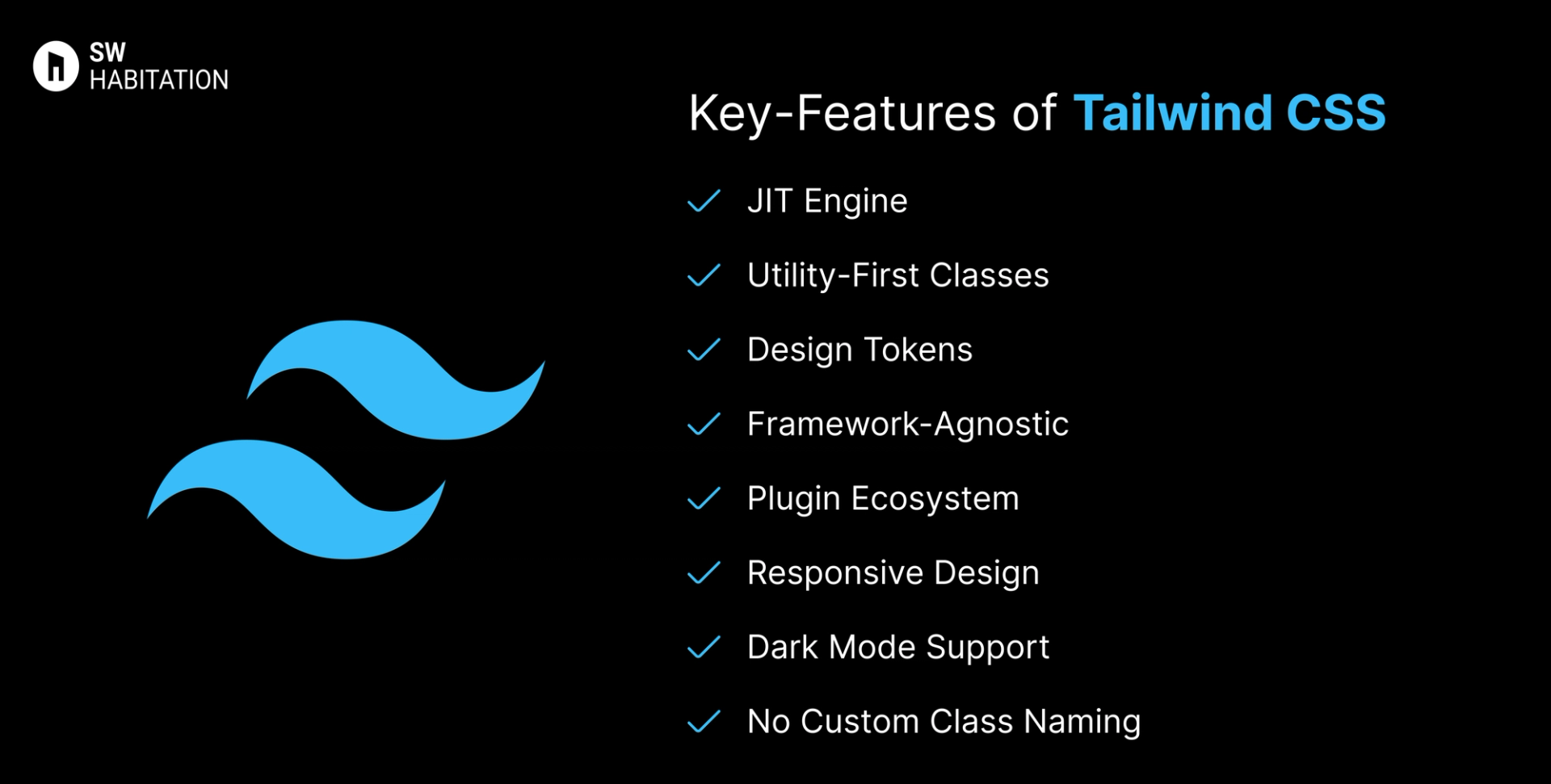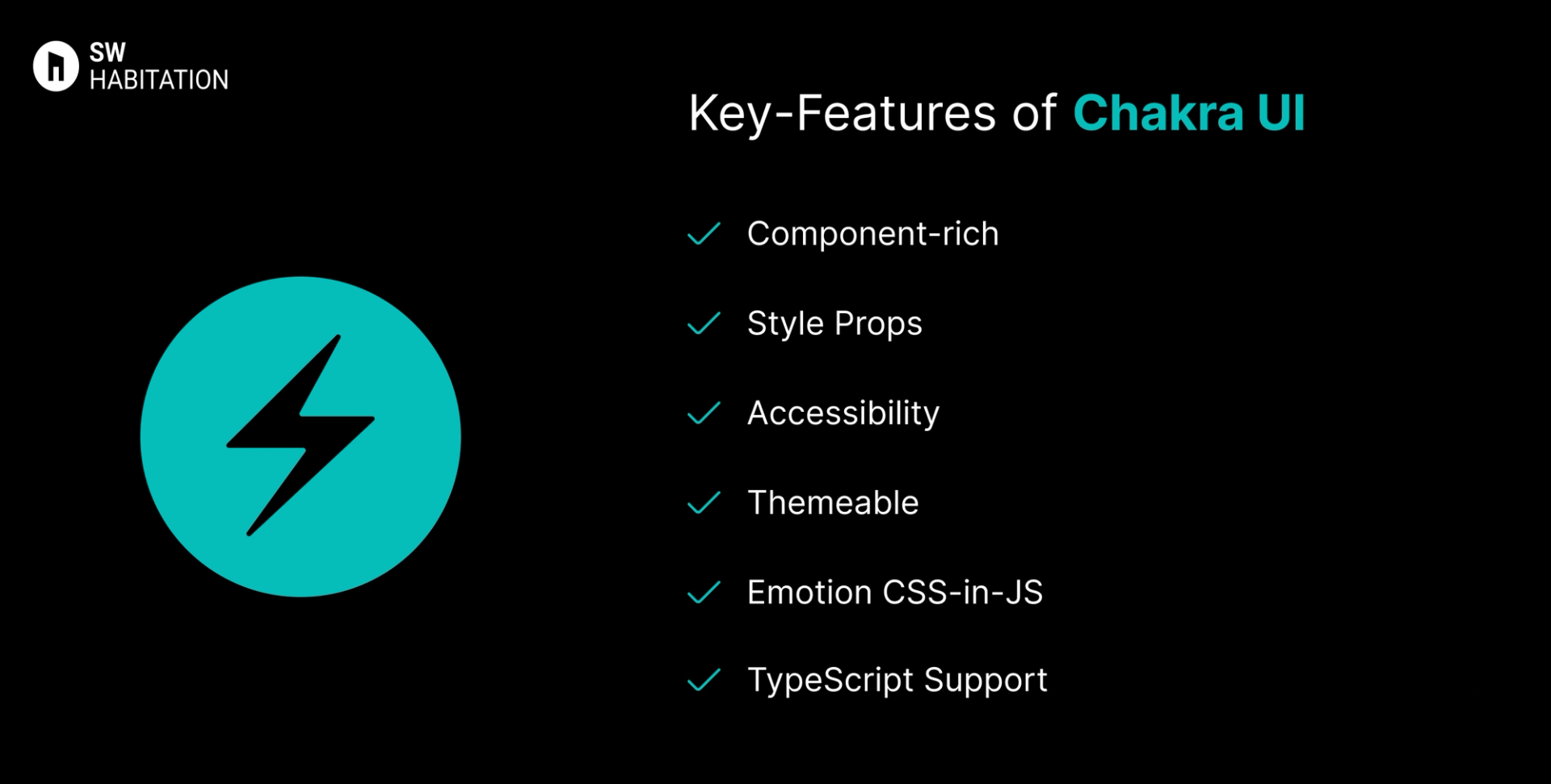Tailwind CSS vs. Chakra UI

Tailwind CSS

Chakra UI
You know how building a website can feel like a lot, especially when you’re trying to style every little thing yourself? Buttons, forms, layouts… it adds up fast. That’s where UI frameworks really save the day. They give you a bunch of premade design elements that you can just drop in and go. It’s like having a design starter pack that helps your site look clean and professional, without spending forever tweaking the details.
What is Tailwind CSS?
Tailwind CSS is a utility-first CSS framework that allows developers to design user interfaces by applying atomic utility classes directly in markup. Rather than offering prebuilt UI components, it empowers developers with building blocks to create fully customized and performance-optimized designs.
Key features of Tailwind CSS


- JIT Engine: Builds only the styles you use, resulting in small and fast CSS bundles.
- Utility-First Classes: Apply styling via single-purpose classes like p-4, text-sm, or bg-red-500.
- Design Tokens: Consistent spacing, sizing, and color scales across your design.
- Framework-Agnostic: Compatible with React, Vue, Svelte, Angular, and plain HTML.
- Plugin Ecosystem: Extend with official and community plugins for forms, typography, etc.
- Responsive Design: Built-in mobile-first breakpoints using prefixes like sm:, md: etc.
- Dark Mode Support: Easily implement dark mode using dark: variants or media strategies.
- No Custom Class Naming: Skip naming headaches now you can directly compose your layout visually with utility classes.
Advantages of Tailwind CSS
- No CSS Context Switching: All styling lives right in the markup — no need to jump between HTML and CSS.
- Framework Independence: Works with any modern frontend stack without restrictions.
- Design Control: Gives developers full control over the UI without being locked into component styling.
- Highly Customizable: Themes, spacing, fonts, and colors can be tailored to any brand or project.
- Consistent Design Language: Utility classes encourage consistency across the app.
- Great Ecosystem: Strong community support, tons of plugins, UI kits, and templates available.
- Performance Optimized: Small CSS bundles with tree-shaking and JIT mean faster load times.
Disadvantages of Tailwind CSS
- Verbose HTML: HTML/JSX can become cluttered with many class names.
- Initial Setup Time: Customizing themes and config files may be overkill for small projects.
- Steep Learning Curve: Takes time to get used to utility classes, especially for those used to traditional CSS.
- No Built-in Components: Unlike Bootstrap or Chakra UI, you need to build components from scratch.
- Harder for Designers: Designers unfamiliar with utility-first might find it harder to collaborate.
What is Chakra UI ?
Chakra UI is a popular React component library that lets you build accessible, responsive UIs with ease. It provides a collection of components with built-in ARIA attributes, theme support, and responsive design via style props.
It’s ideal for devs who want plug-and-play components with built-in styling and dark mode.
Key Features of Chakra UI


- Component-rich: Inputs, modals, alerts, menus, tooltips, accordions, etc.
- Style Props: Apply margin, padding, color, size directly via props.
- Accessibility: ARIA-compliant components out of the box.
- Themeable: Custom themes, variants, dark mode support.
- Emotion CSS-in-JS: Built with Emotion for dynamic styling.
- TypeScript Support: Fully typed and developer-friendly.
Advantages of Chakra UI
- Easy to use with minimal setup.
- Style props eliminate the need for external CSS.
- Great documentation and community support.
- Built-in dark mode and responsive utilities.
- Clean and maintainable code structure.
Disadvantages of Chakra UI
- Limited design flexibility if you want pixel-perfect UI.
- Larger bundle size due to style props and runtime styling.
- Less control over raw DOM/styling.
- Not Tailwind-friendly out of the box.
- Can be verbose for deeply nested component trees.
Comparison Between Tailwind CSS vs Chakra UI
Use Cases of Tailwind CSS
- High-performance marketing pages
- Web apps that need full control over UX and design
- Custom-designed SaaS dashboards
- Design systems with strict branding guidelines
- Mobile-first responsive web apps
Use Cases of Chakra UI
- MVPs, SaaS apps, portfolios that need speed + simplicity
- Devs who prefer using props for styling
- Teams focused on accessibility and fast prototyping
- Apps where the design doesn’t need to be pixel-perfect
- Projects using Emotion or CSS-in-JS ecosystem
Other Resources
Conclusion
UI frameworks make building a polished website way easier. Whether you're working on something simple or a big project, they help you get things looking just right without having to stress over every little design decision. With ready-to-use components, responsive layouts, and modern styles, you can build faster and smarter.
So, pick one that works for you, and start creating a site that looks amazing from the get-go.
Frequently asked questions
Is Tailwind a CSS framework like Bootstrap?
It's more of a utility-based toolkit. While Bootstrap gives you components, Tailwind gives you building blocks.
Can I use Tailwind with React?
Yes, Tailwind works seamlessly with React, Vue, Svelte, and even plain HTML.
How is Tailwind different from inline styles?
Tailwind uses a design system with responsive variants and consistent scaling — unlike random inline styles.
Does it support dark mode out of the box?
Yes. You can use dark: variants or configure custom strategies.
Is Chakra UI good for accessibility?
Yes! Chakra UI is designed with accessibility (a11y) in mind, following WAI-ARIA standards.
Does Chakra UI support dark mode?
Yes, it has built-in dark mode toggling using the ColorModeProvider.
What styling method does Chakra UI use?
Chakra uses Emotion (a CSS-in-JS library) and style props for inline styling.
Can I create custom themes in Chakra UI?
Definitely. Chakra has a powerful theming system that supports tokens, variants, and full overrides.
Is Chakra UI production-ready?
Yes. It’s widely used in SaaS apps and has a strong developer community.
